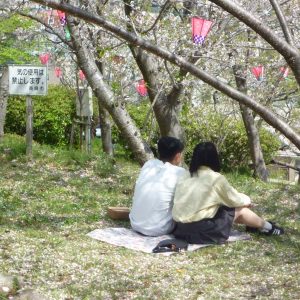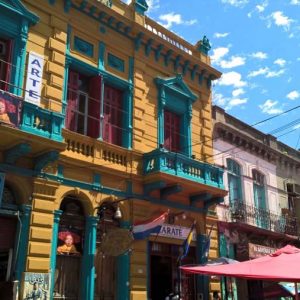Having ‘done’ India’s Golden Triangle some years ago, we wanted to explore Rajasthan’s lesser known sights in Jaisalmer, Jodhpur, Ranakpur and Udaipur.
Manvar Desert Camp
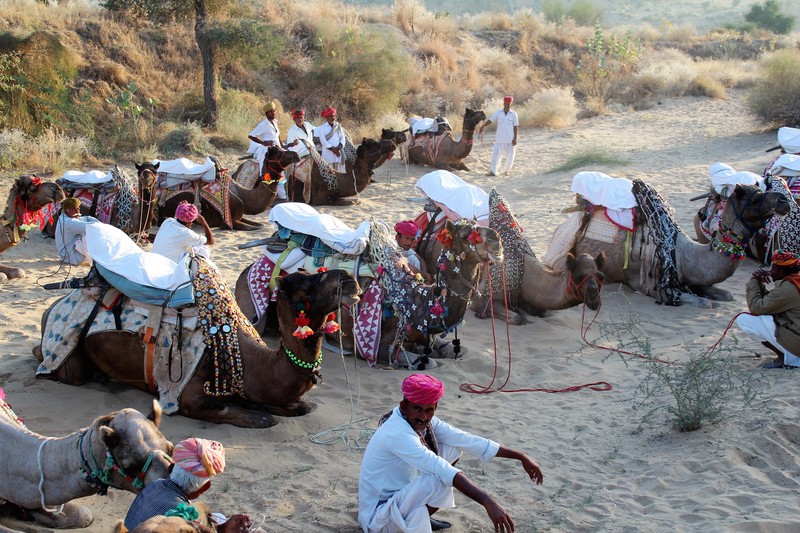 Before hitting the ‘purs’, we spent a night at Manvar Desert Camp: billed as an ’authentic desert experience’. We arrived mid-afternoon and were soon astride a kneeling camel, where we followed the cameleer’s instructions to ‘lean back and hold on tight’ as the camel stood. We were led along sandy tracks towards a high escarpment where we met other ‘ships of the desert’ for sunset. Our cameleer offered to take a photograph, which we naturally assumed would be of us. When the camera was returned, we found a grinning camel and our headless bodies. The following day, we explored steep desert dunes by jeep and visited a village homestead to see and hear about family life.
Before hitting the ‘purs’, we spent a night at Manvar Desert Camp: billed as an ’authentic desert experience’. We arrived mid-afternoon and were soon astride a kneeling camel, where we followed the cameleer’s instructions to ‘lean back and hold on tight’ as the camel stood. We were led along sandy tracks towards a high escarpment where we met other ‘ships of the desert’ for sunset. Our cameleer offered to take a photograph, which we naturally assumed would be of us. When the camera was returned, we found a grinning camel and our headless bodies. The following day, we explored steep desert dunes by jeep and visited a village homestead to see and hear about family life.
Jaisalmer
We’d debated about whether to visit Jaisalmer, which at 200 miles from Pakistan’s border, is somewhat out on a limb, but the journey was well worthwhile. Its name, the Golden City, is well deserved as the yellow sandstone buildings have an attractive golden tinge, especially when enhanced by sunshine. Jaisalmer fort, one of the oldest in Rajasthan, stands high on a hill and is a huge complex with 3,500 inhabitants and 40 hotels. 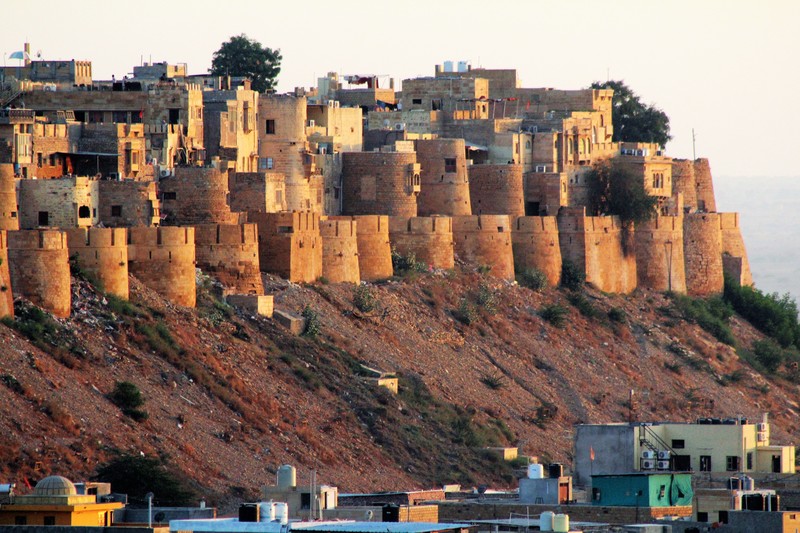 UNESCO have offered to fund restoration if inhabitants move out or use less water which is seeping into the ground and causing the fort to sink. Hearing this, we felt slightly guilty that we’d chosen a hotel within the fort, but its location and an early start, allowed us to steal a march on other tourists, and we had the seven Jain Temples to ourselves. The interiors were a photographers’ heaven with intricate, delicate carvings on white marble and Buddha statues around the walls. We meandered through a warren of narrow lanes full of people, cattle, dung, motorbikes and sleeping dogs and past the old Maharaja’s Palace with red, henna handprints of suttee victims at the entrance. Down in town, we resisted a boat ride on the lake, Gadi Sagar Tank, and headed for the new Palace, the current Royal Family’s residence, with its small museum of artefacts ranging from weaponry to kitchen equipment.
UNESCO have offered to fund restoration if inhabitants move out or use less water which is seeping into the ground and causing the fort to sink. Hearing this, we felt slightly guilty that we’d chosen a hotel within the fort, but its location and an early start, allowed us to steal a march on other tourists, and we had the seven Jain Temples to ourselves. The interiors were a photographers’ heaven with intricate, delicate carvings on white marble and Buddha statues around the walls. We meandered through a warren of narrow lanes full of people, cattle, dung, motorbikes and sleeping dogs and past the old Maharaja’s Palace with red, henna handprints of suttee victims at the entrance. Down in town, we resisted a boat ride on the lake, Gadi Sagar Tank, and headed for the new Palace, the current Royal Family’s residence, with its small museum of artefacts ranging from weaponry to kitchen equipment.
Jodhpur
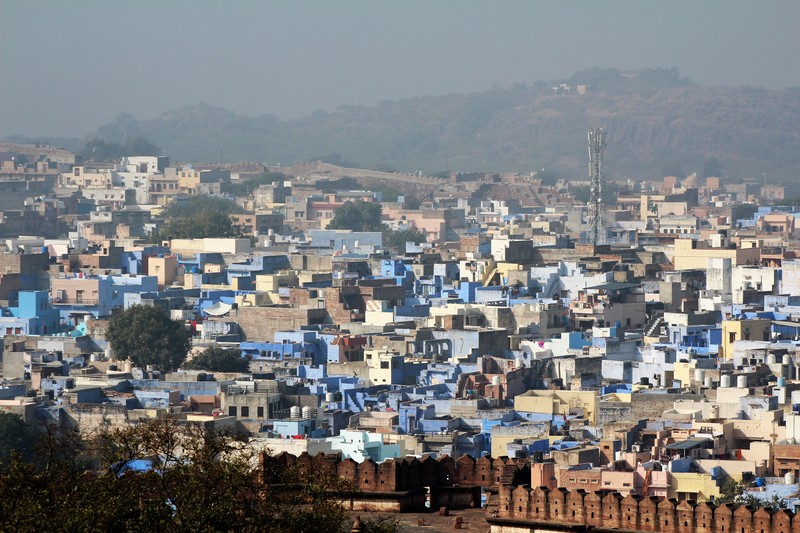 Jodhpur’s Meherangarh Fort, the second largest in the world, dominates the city and we walked up the stone path, through seven gates designed to prevent charging enemy elephants. Interconnecting rooms contained elephant howdahs, art, weapons and coins. The intricate carvings on the stone exterior resembled wood because of the colour. Walking back down into town, it was easy to see why Jodhpur is known as the ‘Blue City’ with many houses painted indigo. Sardar Market, with an imposing arch and clock tower, sold everything you could possibly want. In one of the shops, a smooth salesman ran through his non-stop, glib patter as he laid out bedspreads of various designs on the floor, proudly revealing the names of the famous fashion houses they were destined for. However, he was also happy to tempt us with baby-soft cashmere pashminas, a snip at £15.
Jodhpur’s Meherangarh Fort, the second largest in the world, dominates the city and we walked up the stone path, through seven gates designed to prevent charging enemy elephants. Interconnecting rooms contained elephant howdahs, art, weapons and coins. The intricate carvings on the stone exterior resembled wood because of the colour. Walking back down into town, it was easy to see why Jodhpur is known as the ‘Blue City’ with many houses painted indigo. Sardar Market, with an imposing arch and clock tower, sold everything you could possibly want. In one of the shops, a smooth salesman ran through his non-stop, glib patter as he laid out bedspreads of various designs on the floor, proudly revealing the names of the famous fashion houses they were destined for. However, he was also happy to tempt us with baby-soft cashmere pashminas, a snip at £15.
Ranakpur
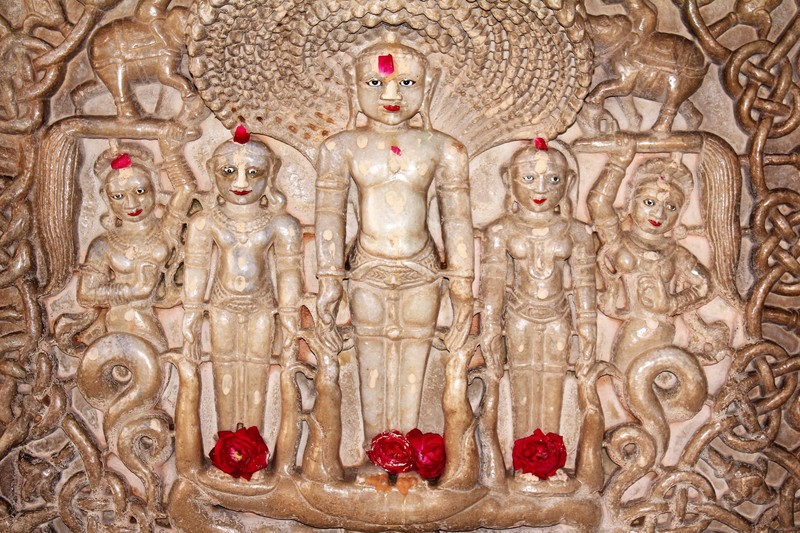 On route to Udaipur, we visited the Shri Ranakpur Jain Temple and discovered that Jains believe animals and plants contain living souls and renounce violence to such an extent, that monks sweep the path in front of them to prevent stepping on, and squashing insects. Hindi craftsman took 50 years to build the temple and individually carve the 1,444 white marble pillars which represent hell to heaven with demons at the bottom and mythological gods and goddesses at the top.
On route to Udaipur, we visited the Shri Ranakpur Jain Temple and discovered that Jains believe animals and plants contain living souls and renounce violence to such an extent, that monks sweep the path in front of them to prevent stepping on, and squashing insects. Hindi craftsman took 50 years to build the temple and individually carve the 1,444 white marble pillars which represent hell to heaven with demons at the bottom and mythological gods and goddesses at the top.
Udaipur
Lake Pichola and the City Palace dominated Udaipur. We sailed around the iconic, floating Lake Palace Hotel, where scenes from Bond’s Octopussy were filmed and the grand Palace. Visiting the Palace, we saw a huge marble trough, cut from a single piece, which acted as a fridge, and rooms with European Murano glass, Delft blue and white china and Portuguese tiles. 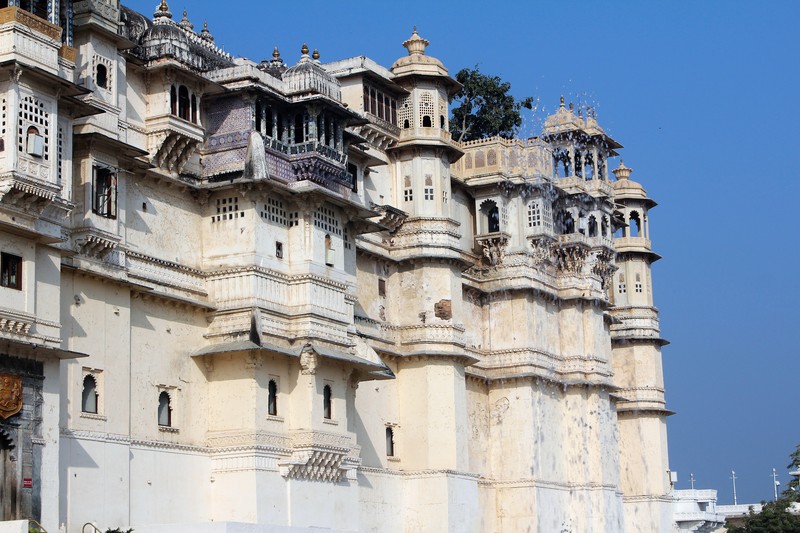 A glass chandelier was so huge, the Maharajah checked the ceiling would bear the weight using 15 elephants, whilst photographs from the early 1900s, showed the Prince of Wales was a regular visitor. We walked through a maze of narrow corridors, up and down steps ensuring our heads avoided the low doors: all designed to ensure that enemies entered one by one with heads bowed.
A glass chandelier was so huge, the Maharajah checked the ceiling would bear the weight using 15 elephants, whilst photographs from the early 1900s, showed the Prince of Wales was a regular visitor. We walked through a maze of narrow corridors, up and down steps ensuring our heads avoided the low doors: all designed to ensure that enemies entered one by one with heads bowed.
With two nights in each city we didn’t feel as though we were on a treadmill, with journey’s between the cities being a reasonable three to four hours. Travelling by car meant suitcases could be simply bundled into the back and allowed us to see the Thar Desert. So, if you want to turn your ‘Golden Triangle’ into a ‘Golden Hexagon’, I’d recommend ‘pur-ring’ through Rajasthan.

